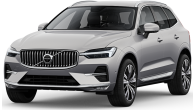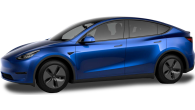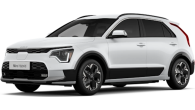I’m the eldest child in my family, and the best. That’s despite not having a degree in international law and working for the United Nations saving lives like my younger sister, or being a high-flying accountant like my other sister, or running a design agency in Germany like my other sister.
But being first and best like me is the exception to the rule because normally first versions of anything aren’t as good as they can be – like the Mercedes-Benz GLC when it made its debut in 2015. Now the updated version has arrived and it’s better, much better... in some ways.
Yes, the GLC is the most popular Mercedes-Benz model in this country. It is literally the C-Class of the brand’s SUV line-up (which has changed, too).
There’s no longer a diesel, but there’s a hybrid instead, although that won’t arrive until 2020 along with the hardcore AMG versions.
Which is why at the Australian launch in October, 2019, I was only given the GLC 200 and 300 to climb all over and drive. So, while neither I nor anybody else piloted all of the types of GLCs you can buy, here’s everything you need to know about them.
Mercedes-Benz GLC200 2020:
| Engine Type | Turbo 4, 2.0L |
|---|---|
| Fuel Type | Premium Unleaded Petrol |
| Fuel Efficiency | 7.8L/100km (combined) |
| Seating | 5 |
| Price From | $62,480 - $71,830 |
| Safety Rating |
|
Does it represent good value for the price? What features does it come with?
7 / 10
There are eight members in the GLC family. Most affordable is the GLC 200 with its list price of $66,100, then the 300 at $77,700 and a 300e plug-in petrol-electric hybrid for $80,400.
Then there are the Mercedes-AMGs – the GLC 43 at $109,900 and the 63 S for $161,000. These can be had in Coupe form, too: $117,400 for the 43 and $168,100 for the 63 S.
Want the Coupe body style and AMG-look without the price tag? Well, there’s a GLC 300 coupe, too, for $87,700.
Standard features on the GLC 200 include 'Artico' upholstery (think leather but not leather), black ash open pore wood trim, leather-clad steering wheel and dual-zone climate control.
There’s also a 12.3-inch digital instrument cluster, 10.25-inch media display with Apple CarPlay and Android Auto, 'Hey Mercedes' MBUX assistant function, sat nav and a five-speaker sound system.
.jpg)
Then there are the 19-inch alloy wheels, roof racks, agility control suspension (see driving section), power tailgate and LED headlights.
The GLC 300 adds wireless charging for your smartphone, 20-inch alloys, privacy rear glass, proximity unlocking, multi-beam LED headlights with adaptive high beams and the 'Driver Assistance' package (see the safety section).
The GLC 300e has the same features as its petrol-only twin but adds air suspension, and pre-entry climate control, while the 300 Coupe come standard with the 'AMG Line' interior and exterior packages.
The Mercedes-AMG 43 SUV and Coupe are seriously loaded up with equipment. Standard is leather upholstery, Burmester sound system, a head-up display, heated front seats, Artico dashboard, panoramic sunroof (in the SUV and a glass sunroof in the Coupe), AMG 'Night Package', AMG 20-inch alloys, sports brakes, AMG grille and black roof rails.
.jpg)
The full-fat Mercedes-AMG 63 S SUV and Coupe step up another level with 21-inch AMG alloy wheels and an AMG body kit complete with front apron, spoiler lip and rear apron.
There’s an AMG performance exhaust system, plus heat and noise insulating glass. Coming standard inside is the AMG performance steering wheel, nappa leather upholstery and three-zone climate control.
Is it good value? Better value than the previous model, that’s for sure, what with the increase in cabin tech, but the sweet spot of the range is the GLC 300.
The GLC’s rivals include Audi’s Q5 which lists from $65,900, the BMW X3 starting at $63,900, and Volvo’s XC60 from $62,990.
If you’re contemplating a Porsche Macan then $81,800 is the start-price there.
.jpg)
Is there anything interesting about its design?
8 / 10
I’ve worked it out: Mercedes-Benz’s designers have just flipped the grille of the previous model upside down. No, they haven’t, but the new face of the GLC looks more resolved, broader and determined than the 2015 car.
Along with the grille and bumper, the headlights have been restyled and now appear more elegant, while the inlays in the tail-lights now have a floating square-shaped design.
Changes to the interior may seem minimal, but only from a material and trim perspective, the upgrade in technology is big. There’s the new display screen, the digital instrument cluster, the steering wheel and touch pad controller, and new upholstery colours.
There are 17 upholstery colours and combinations. Black is standard across the line-up in Artico and leather, while 'Silk Beige' and 'Magma Grey' are no-cost options on GLC 200 and 300 SUVs.
.jpg)
There are 10 paint hues to choose from with 'Polar White' (non-metallic) being a no-cost colour across the range and 'Iridium Silver Metallic' standard on the GLC 63 S SUV and Coupe.
Optional colours include: 'Hyacinth Red', 'Brilliant Blue' and what seems like 50 shades of grey with names like 'Selenite Grey', 'Mojave Silver' and 'Obsidian Black.'
Do the grades differ in their look? Yep, you can tell you’re looking at a GLC 300 and not a 200 by the 20-inch alloy wheels, running boards and rear privacy glass.
The GLC 300 Coupe could be mistaken for a full-blown AMG model thanks to its AMG Line body kit including 20-inch wheels, while the cabin is also outfitted with the AMG Line interior package adding aluminum sports pedals, flat-bottomed steering wheel and AMG floor mats.
.jpg)
As for the AMG grades the GLC 63 S looks more hardcore than its 43 ‘lite’ sibling thanks to the 21-inch rims, ‘jet-wing’ design front apron, flared guards, finned diffuser, spoiler lip and AMG performance exhaust system.
All interiors, regardless of the grade, are stunning. Even the entry-level GLC 200 with its black ash open pore wood trim and chrome air vents feels modern and uber stylish (I’m reclaiming the word uber).
There’s definitely more wow factor here than in the cabins of Audi and BMW rivals, particularly now with the large media screen and virtual instrument cluster.
What are the GLC’s dimensions? Well, it’s not a huge SUV at just 4669mm long, 1890mm wide and 1639mm tall.
.jpg)
How practical is the space inside?
7 / 10
It depends. The SUV is absolutely (and obviously) the more practical of the two body styles, and at 191cm tall I can sit with plenty of head and legroom behind my driving position, while the boot’s cargo capacity is 550 litres.
The Coupe will need you to make a couple of practicality compromises. There weren’t any Coupes at the Australian launch in October, but Matt Campbell tested it in Europe and at 182cm tall he found the raked roofline better suited to smaller adults and children. The boot in the Coupe is smaller, too, at 500 litres capacity.
Cabin storage on board both the SUV and Coupe is good with four gigantic cupholders (two up front and two in the back), big door pockets, a large centre console bin and a decent-sized hidey hole under the trapdoor in front of the media touch pad.
Talking of that touch pad, it’s just one of the ways to access the media system, you can also use the touchscreen and the small black ‘swipe’ button on the left of the steering wheel.
.jpg)
The MBUX media system with its Hey Mercedes personal assistant function works to open the sunblind for example, or adjust the climate control, or locate destinations in the sat nav.
While the tech is still a bit clunky it represents the primitive stages of cars that’ll probably be more like companions in years to come. That’s possibly a bit creepy, but damned convenient and practical, nonetheless.
The digital instrument cluster is configurable to align with each driver’s personal preferences.
All GLCs come equipped with two USB ports and a 12-volt outlet, while grades from the 300 up also have smartphone wireless charging.
Three-zone climate control is only standard on the Mercedes-AMG GLC 63 S, but all grades come with directional air vents for the rear seats.
.jpg)
What are the key stats for the engine and transmission?
8 / 10
There are four petrol engines and a plug-in hybrid on offer in the Australian GLC line-up.
The GLC 200 is rear-wheel drive (RWD) only and has been given a new four-cylinder 2.0-litre turbo-petrol engine making 145kW of power and 320Nm of torque (up 10kW/20Nm), while the GLC 300 is all-wheel drive (AWD) using the same engine tuned to produce 190kW/370Nm (up 35kW/20Nm).
Both have a nine-speed automatic transmission and use a new 48-volt mild-hybrid system which can cut the engine during coasting and add up to 150Nm of torque.
.jpg)
The GLC 300e is a plug-in petrol-electric hybrid and is also AWD with a 2.0-litre four-cylinder engine making 155kW/350Nm, plus a 90kW/440Nm electric motor.
The Mercedes-AMG GLCs are both AWD and use a nine-speed sports automatic transmission but have different engines. The Mercedes-AMG 43 has a twin-turbo 3.0-litre V6 making 287kW/520Nm, while the 63 S has a twin-turbo 4.0-litre V8 producing 375kW/700Nm.
This update marks the disappearance of the GLC 300 d diesel from the line-up. Mercedes-Benz told us why in our news story here.
How much fuel does it consume?
7 / 10
Mercedes-Benz says the GLC 200’s 2.0-litre four-cylinder turbo engine should use premium unleaded at a rate of 7.8L/100km over a combination of open and urban roads. The combined fuel consumption of the GLC 300 according to Mercedes is 8.1L/100km.
More fun but less economical are the AMGs with the GLC 43’s V6 using 10.4L/100km over a combination of open and urban driving, while the GLC 63 S is even thirstier with the official fuel economy being 12.2L/100km.
Mileage figures have yet to be given for the 300e plug-in petrol-electric hybrid.
Warranty & Safety Rating
What safety equipment is fitted? What safety rating?
9 / 10
The Mercedes-Benz GLC was given the maximum five-star ANCAP rating when it was tested in 2015.
Coming standard from the entry-grade GLC 200 are nine airbags, a 360-degree camera, auto parking, plus advanced safety technology such as adaptive cruise control, AEB, blind spot warning, rear cross traffic alert and traffic sign recognition.
.jpg)
Grades from the GLC 300 upwards pick up the 'Driver Assistance Package' which adds active steering, cross traffic function, active blind spot and lane keeping assistance, evasive steering and lane changing assistant.
For child seats you’ll find three top tether points and two ISOFIX mounts across the second row.
What does it cost to own? What warranty is offered?
7 / 10
The GLC is covered by Mercedes-Benz’s three-year/unlimited kilometre warranty. While the duration of that coverage is short it does align with the other German 'big three' competitors, Audi and BMW.
That said, we’d encourage the luxury brands to follow the lead of mainstream manufacturers and move to five-year warranties.
Servicing is recommended annually or every 25,000km, whichever comes first. Owners are able to prepay for the servicing which amounts to $2150 for three years or $2700 if you pay as you go.
.jpg)
What's it like to drive?
8 / 10
The GLC 300e and AMG versions hadn’t arrived in Australia at the time of launch in October 2019, but I did have the opportunity to put hundreds of kilometres on the GLC 200 and 300, on our less than perfect local roads.
I should point out here that the SUVs we drove had the standard 'Agility Control' suspension, which is Benz-speak for regular shock absorbers and coil springs.
That was good news to me when I arrived ready to drive, given the GLCs we tested in Europe earlier in 2019 were fitted with air suspension and driven on incredibly smooth roads.
Both the GLCs I tested were also fitted with the AMG Line pack and while this doesn’t affect the output or change the suspension it did increase the 200’s wheel size from 19- to 20-inch rims.
.jpg)
Starting in the GLC 200 I was impressed by how easy the SUV was to drive with accurate and light steering, great visibility and while acceleration from 0-100km/h in 7.8sec is nothing to brag about I was won over by the balanced feel of the RWD SUV.
I didn’t get that same balanced feel in the AWD GLC 300 but there was the superb traction and much swifter acceleration (0-100km/h in 6.2s).
The GLC 300 and 200 struggled, however, to remain composed and maintain a comfortable ride on the extremely shoddy, but typically Aussie roads I tested them on.
.jpg)
There also seemed to be a lack of travel in the suspension causing both cars I tested to ‘bottom-out’ at regular speeds in fairly small dips. If you’re planning to spend money on optioning yours up, I’d seriously consider ticking the 'Air Body Control' air suspension box.
That said, the driving experience was a tranquil, easy and enjoyable one – the way a C-Class SUV should be.
I know there are readers out there keen to know about the off-road capability of the GLC but there was no chance to test this out on the Australian launch.
Matt Campbell did have the opportunity to get the GLC muddy in Europe and found that with the 'Off Road Pack' it’s capable of handling tougher terrain than many would think. Unfortunately, that off-road pack won’t be available in Australia.
And while we’re yet to sample the updated version of the Mercedes-AMG 43 and 63 S the previous models were outstanding, and going by our impression of the vehicles in Europe, will slap a smile on your face. We’ll know for sure when those SUVs arrive later in 2020.
Verdict
The updated Mercedes-Benz GLC has improved in many ways. It’s better looking, more powerful, and smarter with the addition of Hey Mercedes and new technology. The loss of the diesel won’t upset many. Benz says its customers are moving away from that fuel and the arrival of the plug-in hybrid is a step in the right, and more environmentally friendly, direction.
The GLC 300 is the sweet spot in the range. It's a bit over $10K more expensive than the 200 but comes with all-wheel drive, proximity unlocking, privacy glass and the awesome safety tech.
Range and Specs
| Vehicle | Specs | Price* |
|---|---|---|
| glc200 Base | 2.0L, Premium Unleaded Petrol, 9 SPEED AUTOMATIC G-TRONIC | $62,480 - $71,830 |




.jpg)
























.png)









.jpg)



.jpg)
Comments